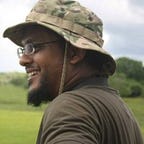Morse Code FTW
As a part of my amateur radio course, popularly known by the terms ham radio, I am in the process of learning Morse code and am really hooked. Morse code is also popularly known as CW , short for continuous wave, a method where a sinusoidal carrier wave is switched on and off where information is carried in the varying duration of the on and off periods of the signal. Morse code telegraphy is one of the older, possibly the oldest form of wireless communications. With the advent of newer communication technologies, this once most popular form of long distance wireless communication — which is more of an art than science — is dying and amateur radio operators are the only ones keeping it alive. One may wonder why in this day and age anybody would invest time in learning Morse code, also simply called code, and use it for communications rather than relying on more modern methods.
Firstly, Code is a form of art, and gives the practitioner a great deal of satisfaction. Many believe that Morse code is a dots and dashes representation, but that is only the half truth — dots and dashes are only a visual representation — and seasoned practitioners rely on the sound or note of each character rather than visualizing dots and dashes, much like one would play a musical instrument. There are just two notes; dit(.) and dah(-). Nowadays proficiency in Morse is not mandatory to get a general or novice class amateur radio license, but the advanced license examinations include a practical Morse code test. Hams who can communicate in Code are generally well respected in ham circles and wear that ability with pride.
Secondly, communicating using Code over long distances (popularly known as DXing) as much as several thousand kilometers, requires very little transmission power — in the order of just a few milliwatts! Veteran hams are known to relate stories about how they communicated across oceans and continents using very low transmission power devices. These devices are called QRP devices and that term originates from Q-Code, which is a 3 letter code that was invented many years before the SMS language. QRP equipment remain one of the most efficient forms of communication to this date. It is unfathomable that such simple devices, which can be home-brewed easily using cheap electronics components, could be used for communicating with people on the other side of the globe. The art and science of long distance communications is another area which warrants an article of its own. Using the ionosphere, known as ionospheric propagation and the moon for radio signal reflection (known as moon bouncing) and thereby increasing the range of signal propagation are fascinating areas of study. One should appreciate the fact that such propagation happens directly between the stations without intermediaries or fixed networks in place. Even in the event of a global catastrophe which could result in the total failure of communications infrastructure, hams would still be able to setup their antennas and equipment and continue to communicate — there are innumerous cases where hams had come to the assistance of the local communities in times of natural disaster.
Thirdly, this simple method of communication is highly resilient to natural as well as man made interference, such as lightning and electrical noise. In ham terminology, these forms of interference are known as QRN and QRM. On the contrary, many modern communication technologies are susceptible to such interference. In other words, owing to the extremely simplistic design and operation principles behind CW, it is arguably the only effective long distance communication technique under extremely noisy conditions.
Finally, I believe that communicating using Code improves your mental faculties. One needs to get to a level of deep concentration in order to send and receive messages in Morse code, quite similar to a state of meditation, which I have found to be quite relaxing. Perhaps this is one of the reasons why many hams live long, healthy and fruitful lives.
To conclude, this art and science is undergoing a revival with many youngsters taking to the hobby and learning directly from the veterans. My guru, Mr. Kulasekara (call sign 4S7KG), affectionately known as Kule is such a veteran who learned the art from a Polish guru and his style of teaching Code has proven to be extremely effective and enjoyable; hundreds of his past students would bear testimony to this fact. Finally, Morse code is an old art that is here to stay, so if you are interested, try joining your local ham radio club.
